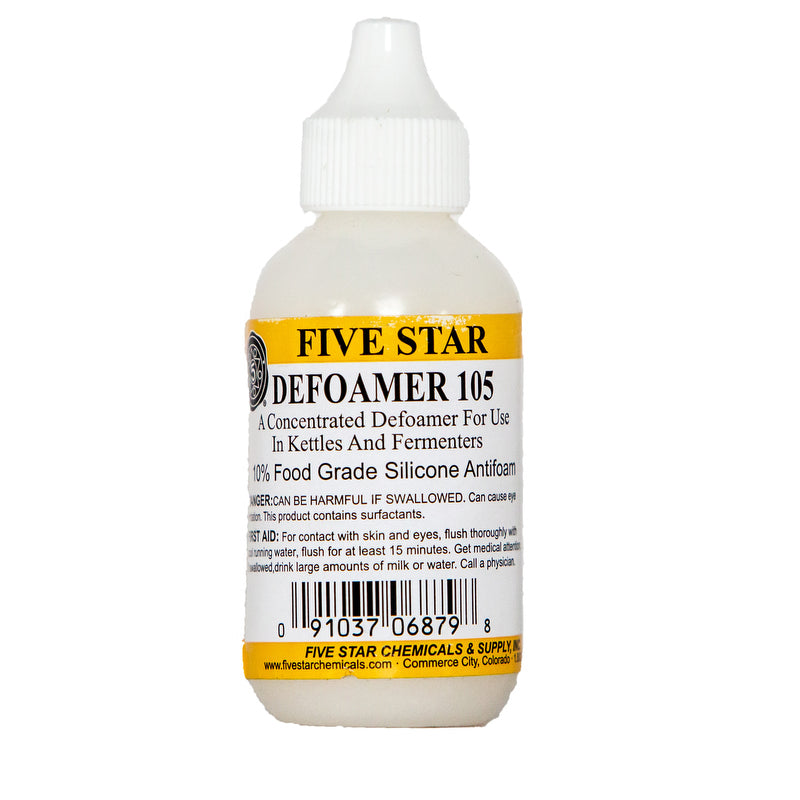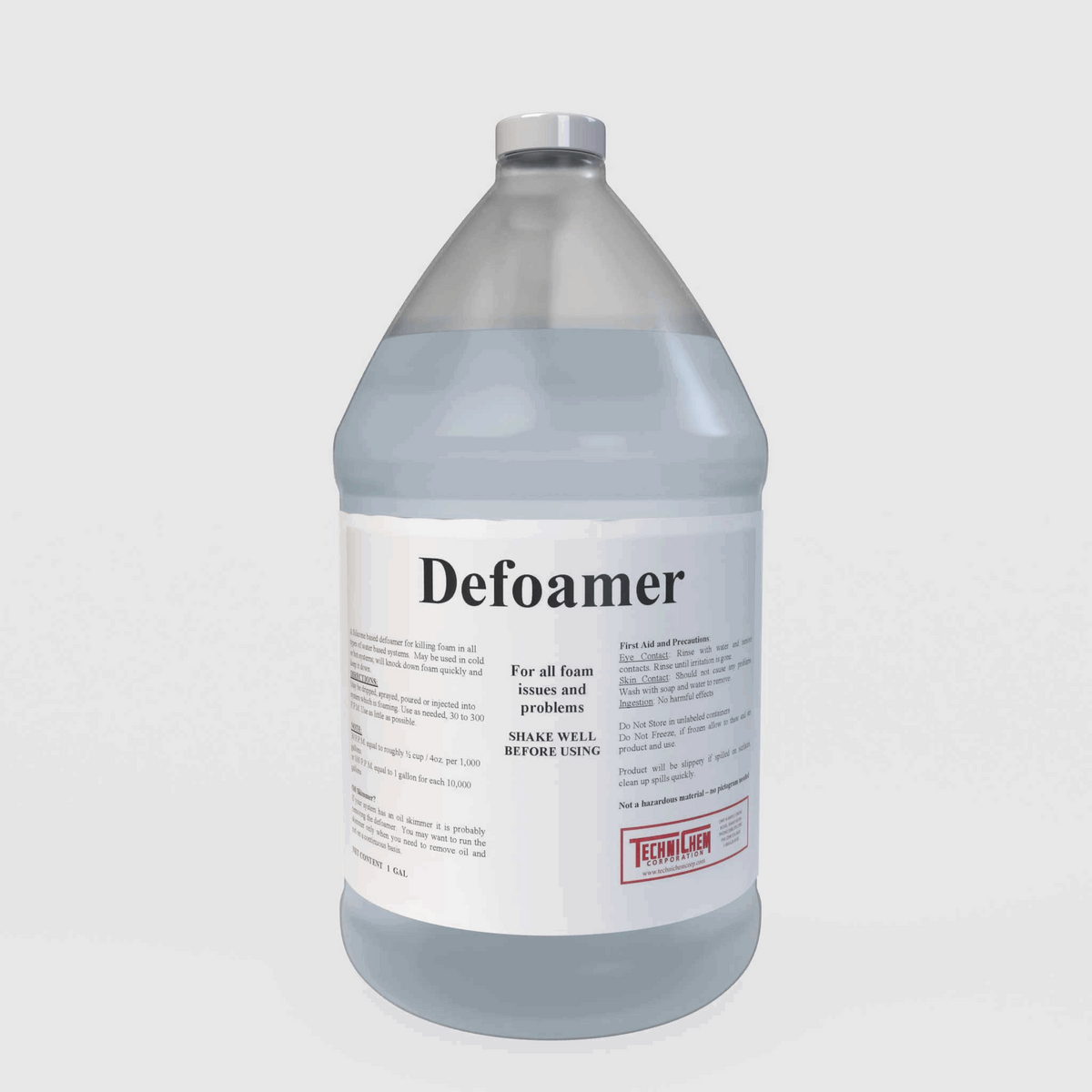How Chemical Defoamer Assists Boosting Productivity in Different Industries
How Chemical Defoamer Assists Boosting Productivity in Different Industries
Blog Article
Exactly How a Chemical Defoamer Can Improve Effectiveness in Your Procedures and Procedures
In today's competitive industrial landscape, operational effectiveness is vital, and the function of a chemical defoamer can not be ignored. By addressing foam-related difficulties that interrupt processes, defoamers not only help with smoother operations but also add to set you back financial savings and improved product quality. Their impact spans various industries, making them an essential consideration for those aiming to maximize efficiency. Nonetheless, recognizing the certain benefits and applications of defoamers raises important inquiries about their selection and implementation. What elements should you consider to optimize their efficiency in your operations?
Understanding Chemical Defoamers
Chemical defoamers play a critical role in different industrial procedures by successfully protecting against and decreasing foam formation. Foaming can cause functional ineffectiveness, increased manufacturing prices, and jeopardized item top quality. Defoamers are specialized chemical additives made to disrupt the security of foam bubbles, thereby allowing smoother handling and improved efficiency throughout a number of sectors, including food and drink, pharmaceuticals, and wastewater treatment.

These representatives commonly include surfactants, oils, or polymeric compounds that lower the surface tension of the fluid, assisting in the collapse of foam. The device by which defoamers run frequently includes the destabilization of foam frameworks, permitting for quicker drainage of fluid and the launch of entraped air. Various formulas are customized to details applications, considering elements such as compatibility with the system, temperature, and the nature of the liquid being dealt with.
Understanding the structure and capability of chemical defoamers is crucial for selecting the suitable product for a given application. By enhancing defoamer choice based on process needs, sectors can boost functional performance, reduce foam-related difficulties, and ultimately boost general productivity.
Advantages of Utilizing Defoamers
Using defoamers can substantially enhance operational efficiency throughout numerous sectors by properly minimizing foam-related concerns. The existence of foam can interrupt procedures, causing boosted downtime, decreased productivity, and potential top quality destruction in final result. Defoamers assist fight these challenges by breaking down foam frameworks, consequently enabling smoother operations.
Among the main benefits of making use of defoamers is the decrease of waste and rework. By lessening foam development, defoamers boost the consistency of procedures, guaranteeing that materials are utilized successfully. This not just reduces functional costs but additionally adds to sustainability initiatives by reducing source usage.
Additionally, defoamers can boost product high quality. In manufacturing setups, extreme foam can result in inconsistencies in item characteristics, influencing client complete satisfaction. By regulating foam levels, defoamers help maintain the desired physical properties of items.

Applications in Numerous Industries
The performance of defoamers expands throughout a vast array of sectors, where their application addresses certain foam-related difficulties fundamental to each sector. In the food and drink market, defoamers are important for enhancing production procedures, such as brewing and dairy handling, where too much foam can impede flow prices and minimize efficiency. By minimizing foam, these representatives improve item top quality and uniformity.
In the chemical manufacturing sector, defoamers are used in processes like paint manufacturing and wastewater therapy. Here, they protect against foam formation that can hinder blending and different phases, consequently enhancing the total effectiveness and effectiveness of procedures.
In pharmaceuticals, defoamers play an essential function in the formulation of fluid medications, making certain proper dose and security by managing foam throughout blending and storage. (Chemical Defoamer)
Additionally, in the farming field, defoamers are utilized in chemical formulations to improve application efficiency and lessen waste.
Selecting the Right Defoamer
Choosing the proper defoamer is important for achieving ideal efficiency in various applications. The choice procedure ought to begin with a comprehensive understanding of the details issues available, consisting of the sort of foam existing, the handling conditions, and the chemical compatibility with other solution components.
Defoamers basics are developed from a selection of materials, including silicone, mineral oils, and fats. Recognizing the ideal make-up is essential, as various products display differing effectiveness in diverse atmospheres. As an example, silicone-based defoamers are typically preferred in high-temperature applications as a result of their security, while organic defoamers may be better for water-based systems.
Furthermore, think about the defoamer's effect on the last item. Some solutions can alter the functional or aesthetic residential or commercial properties, making it imperative to select a defoamer that meets product specifications without compromising quality.
Evaluating is one more critical action in selecting a defoamer. Small trials can give beneficial browse this site understandings right into the defoamer's efficiency, enabling for adjustments before major execution. By very carefully examining these elements, businesses can enhance performance and guarantee that the defoamer effectively meets their functional needs.
Ideal Practices for Application
Executing a defoamer effectively needs careful preparation and adherence to finest methods to maximize its performance. First, conduct a thorough evaluation of the specific application and foam qualities. Recognizing the kind and resource of foam will lead the choice of the most appropriate defoamer formulation.
Following, develop the optimal dose (Chemical Defoamer). Begin with a small trial to establish the minimum reliable concentration, as too much use can cause negative effects on product top quality or operational performance
Monitoring and readjusting the application method is critical; guarantee that the defoamer is introduced at the appropriate point in the procedure for optimal effect, such as throughout mixing or promptly after foam formation.

Additionally, keep clear interaction with all appropriate workers to ensure consistent application techniques and to share understandings on performance outcomes.
Verdict
In verdict, the use of chemical defoamers plays an essential role in boosting operational effectiveness throughout varied markets. By effectively destabilizing foam, these representatives help with quicker drain and air release, therefore lessening interruptions and reducing prices. The tactical application of defoamers site here not just enhances throughput but likewise guarantees regular item quality and resource optimization. Eventually, the unification of defoamers into industrial processes promotes reliability and adds to overall efficiency improvement.

In the food and beverage sector, defoamers are critical for enhancing production processes, such as developing and dairy products processing, where too much foam can impede flow prices and minimize efficiency. Silicone-based defoamers are often preferred in high-temperature applications due to their stability, while natural defoamers might be much more ideal for water-based systems.
Report this page